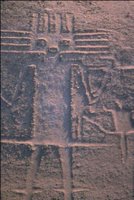
The Irritable Heart: Increased Risk of Physical and Psychological Effects of Trauma in Civil War Veterans
The Irritable Heart is based on work that used American Civil War records to track mental and physical problems of veterans. Doctors of the time noticed that there was a problem experienced by veterans resulting from their traumatic experiences, they called it 'irritable heart'. Researchers led by Roxane Cohen Silver at Irvine used the federally-funded database called Early Indicators of Later Work Levels, Disease, and Death Project, which is free and available to anybody who wants to poke around in it.
This article came about because I'm trying to become a 'real' science writer. The article is based on a report in the Archives of General Psychiatry, and no I don't normally read that journal, but I do get announcements of papers to be published. That's part of being a 'science writer' (although I have to giggle nervously when I refer to myself as such, which is what I did when I said I was an 'archaeologist' so that's only fittin').
Anyway I got the announcement of this paper and wheedled Science magazine's Random Samples column editor into letting me write a piece for that, which was published last month. I ended up writing a much longer piece than was needed for Science, and wanted to publish it someplace. Of course, it's not really archaeology, so the psychology guide at About was kind enough to let me publish it on her site. And voila!
Sometimes I feel like the luckiest dame in the world.
The photograph is of wounded soldiers being tended in the field after the Battle of Chancellorsville near Fredericksburg, Va., May 2, 1863, negative number 111-B-349, and available with a raft of others at the National Archives website.
Tags: Civil War, Post-Traumatic Stress Syndrome, Psychology, History, Archaeology, Writing


